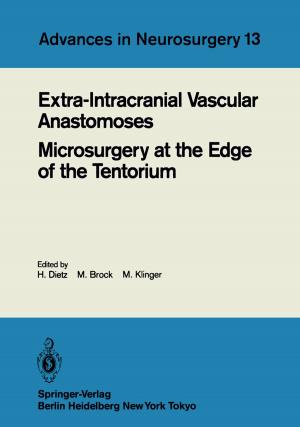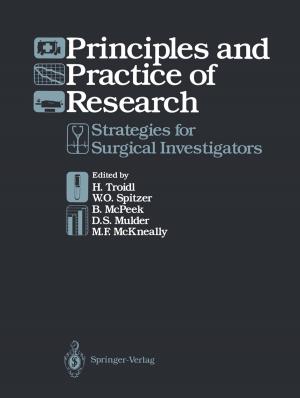| Author: | A. H. Chignell | ISBN: | 9783642965302 |
| Publisher: | Springer Berlin Heidelberg | Publication: | December 6, 2012 |
| Imprint: | Springer | Language: | English |
| Author: | A. H. Chignell |
| ISBN: | 9783642965302 |
| Publisher: | Springer Berlin Heidelberg |
| Publication: | December 6, 2012 |
| Imprint: | Springer |
| Language: | English |
This short book is an account of an approach to retinal detach ment surgery. I hope it will be of use to all those dealing with the detached retina, although it has been written mainly for the training ophthalmologist, who, becoming familiar with the methods of examination, is faced with a bewildering array of methods of treating the detached retina. The object of surgery is to produce the desired result in the least traumatic way possible and this involves correct interpretation of how the detached retina is likely to respond to the operation that is planned. I have therefore concentrated on the aspects of clinical examination that have a direct bearing on the planning of the type of operation to be performed. I have not attempted to deal with all the different surgical techniques currently practised, but have described only those that I believe represent the simplest, safest, and most effec tive methods. I have drawn widely on standard techniques; thus, for examination, Schepens' indirect ophthalmoscopy with scleral depression, Lincoffs use of cryotherapy and his modification of Custodis' non-drainage techniques at operation and Rosen gren's use of intraocular air. Because this book is not intended for the retinal surgical expert I have not dealt in great depth with rare cases, e. g. macular holes, or other conditions that are exceptionally difficult to treat (massive periretinal proliferation).
This short book is an account of an approach to retinal detach ment surgery. I hope it will be of use to all those dealing with the detached retina, although it has been written mainly for the training ophthalmologist, who, becoming familiar with the methods of examination, is faced with a bewildering array of methods of treating the detached retina. The object of surgery is to produce the desired result in the least traumatic way possible and this involves correct interpretation of how the detached retina is likely to respond to the operation that is planned. I have therefore concentrated on the aspects of clinical examination that have a direct bearing on the planning of the type of operation to be performed. I have not attempted to deal with all the different surgical techniques currently practised, but have described only those that I believe represent the simplest, safest, and most effec tive methods. I have drawn widely on standard techniques; thus, for examination, Schepens' indirect ophthalmoscopy with scleral depression, Lincoffs use of cryotherapy and his modification of Custodis' non-drainage techniques at operation and Rosen gren's use of intraocular air. Because this book is not intended for the retinal surgical expert I have not dealt in great depth with rare cases, e. g. macular holes, or other conditions that are exceptionally difficult to treat (massive periretinal proliferation).















